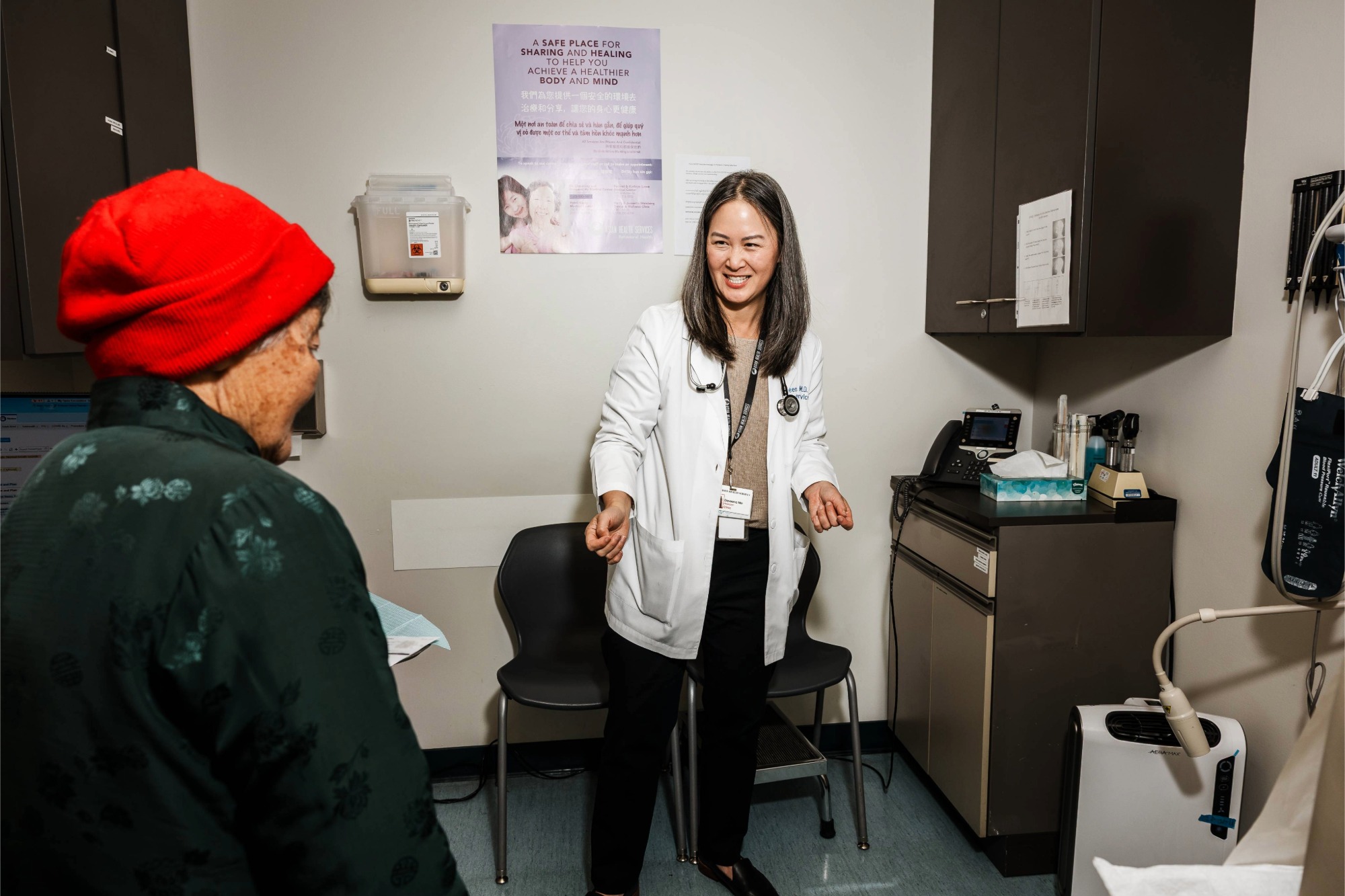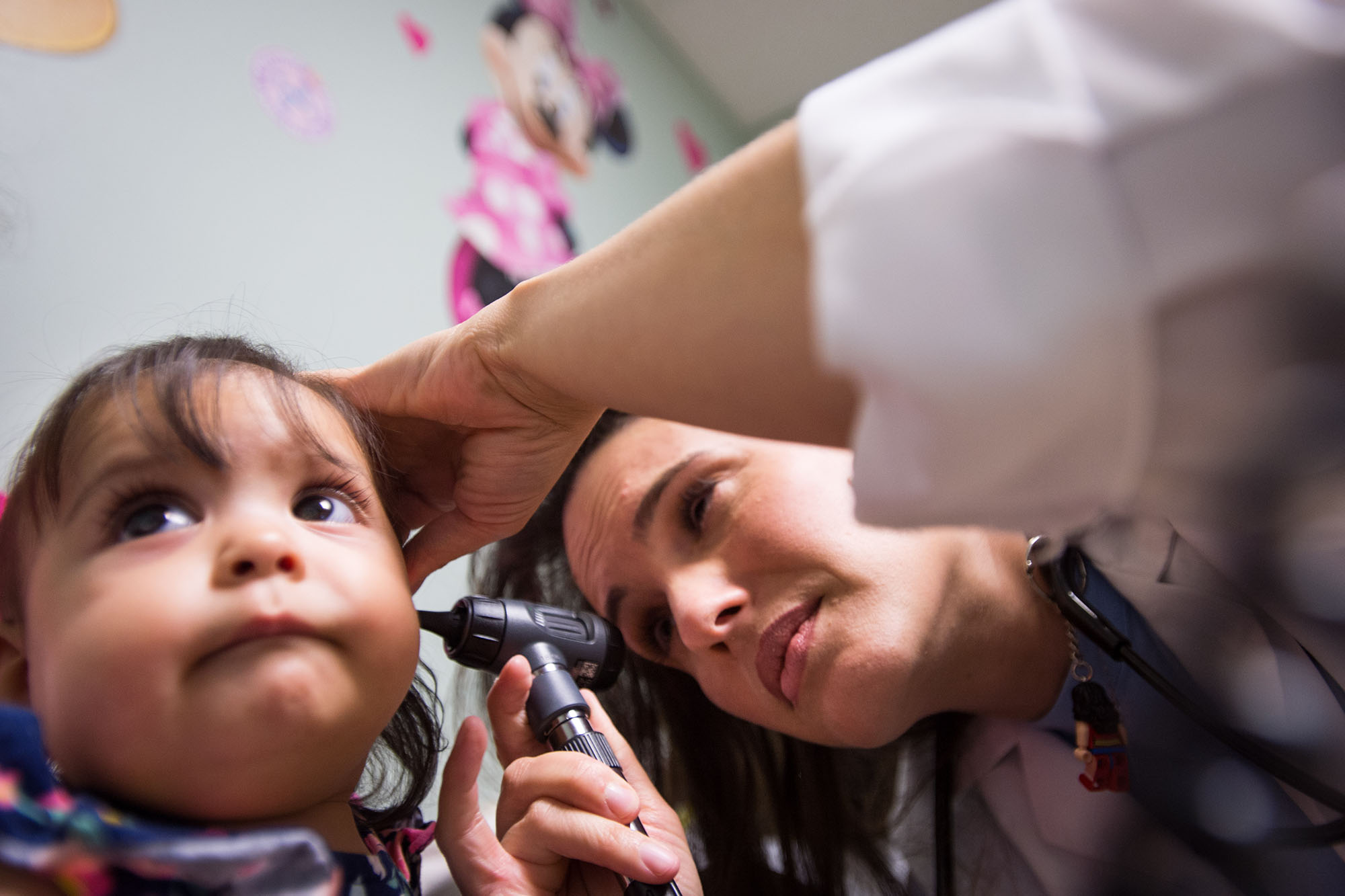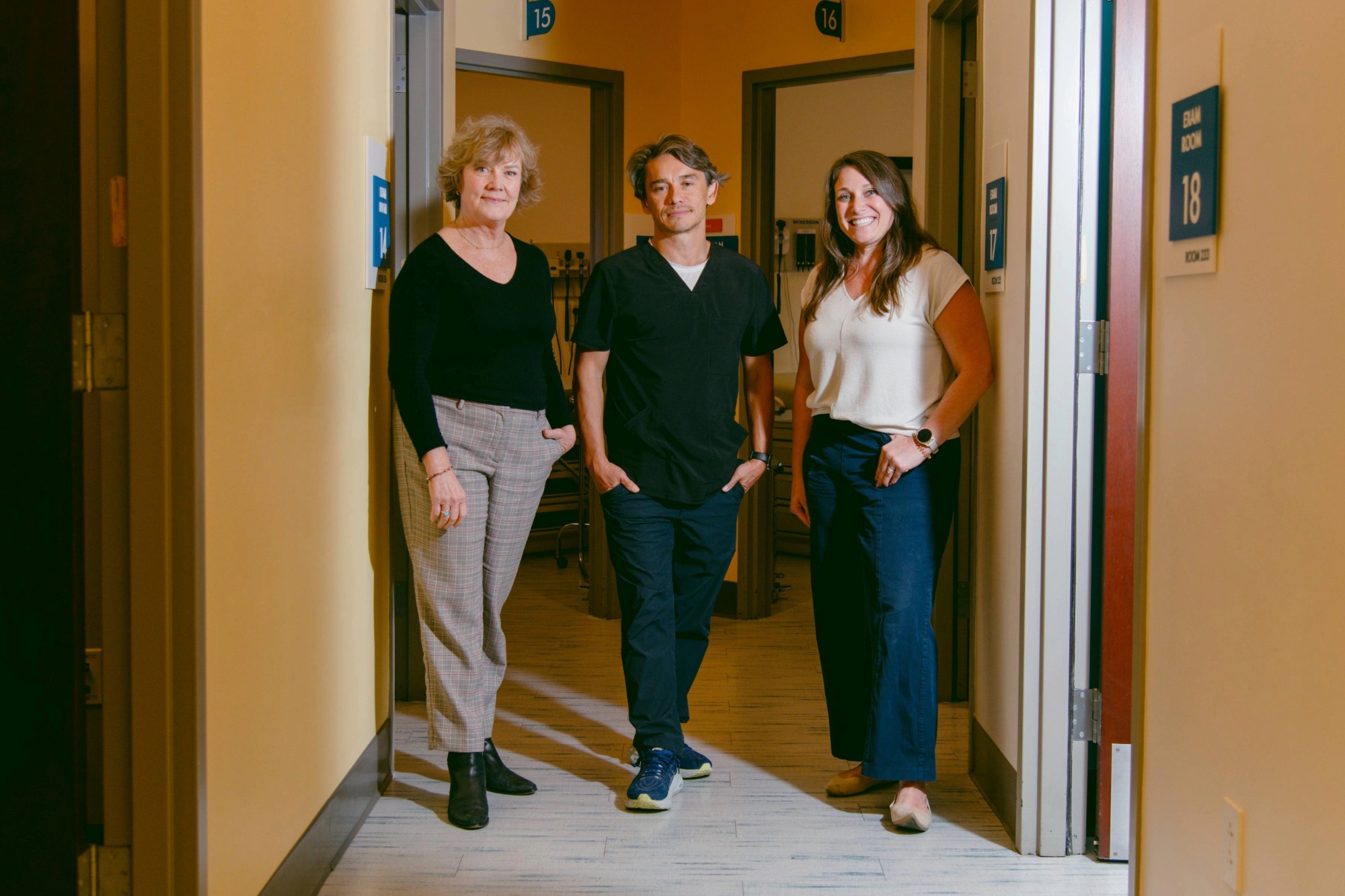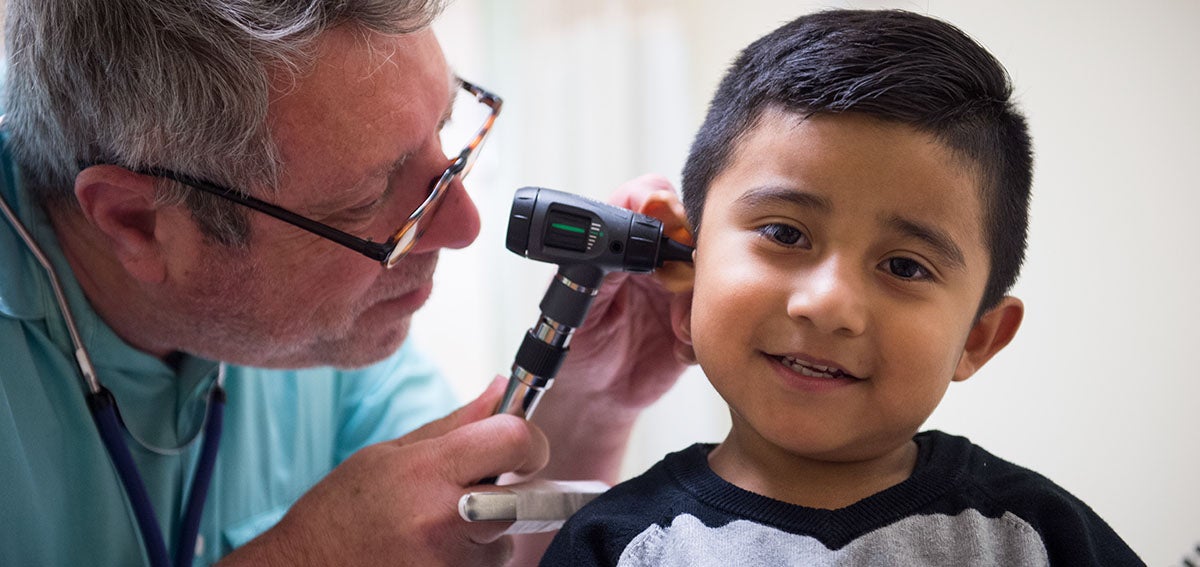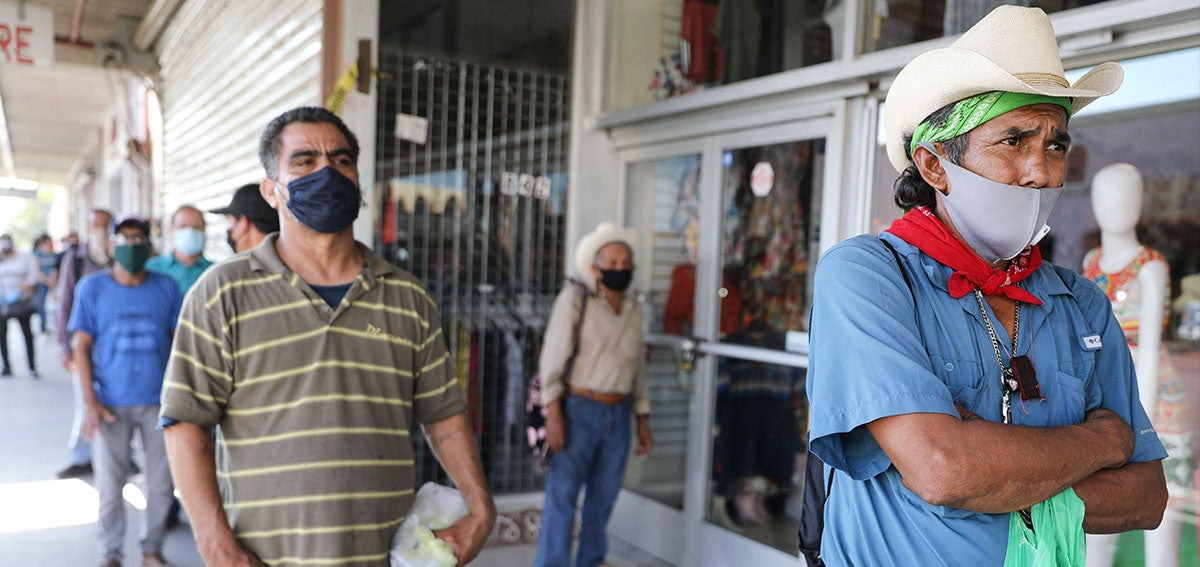
When California’s statewide stay-at-home order took effect in March, Orlando Ruiz lost his job at a landscaping company, and he panicked because he was the only full-time worker in his household. Ruiz, who emigrated from Guatemala seven years ago, shares a house in East Oakland with his wife and two children, his two brothers, and his parents.

His brothers assured him that they could cover the rent with part-time jobs, but then the brother who worked as an apartment janitor got COVID-19. The virus spread through the house, and Ruiz’s father, wife, and other brother all tested positive. Three of them were hospitalized, including Ruiz’s father, who was an inpatient for two weeks. “Now we’re scared to leave the house and go outside, because we don’t want to go through that again,” Ruiz told Madeline Bair of El Tímpano. (El Tímpano, a community-driven media project serving Latinx residents of East Oakland, produced this piece for The Oaklandside.)
Fifty-five percent of Latinx workers have essential jobs in industries such as agriculture, construction, and food services, and “this population doesn’t have the luxury like you or I to stay at home,” Sergio Aguilar-Gaxiola, MD, PhD, founding director of the UC Davis Center for Reducing Health Disparities, told Susan Abram of the USC Center for Health Journalism.
Latinx account for 39% of the state’s population but 61% of COVID-19 infections and 49% of all deaths, according to data from the California Department of Public Health (CDPH). To combat persistent health disparities that have been amplified by the coronavirus pandemic and to hold counties accountable for the health of neighborhoods most deeply affected by COVID-19, the department on October 6 added a new health equity metric to California’s blueprint for reopening businesses and institutions.
Creating a Community Standard
The equity metric is the third indicator in California’s color-coded, tiered system for reopening. “To meet the state’s equity metric, the test positivity rate [percentage of total coronavirus tests that are positive] in counties’ most disadvantaged communities must meet the test positivity threshold for the less restrictive tier,” Tatiana Sanchez and Shwanika Narayan reported in the San Francisco Chronicle. The metric uses the California Healthy Places Index, a catalog of 25 indicators that weigh community health based on factors like access to health care, economic opportunity, and education, to identify the lowest quartile census tracts in each county that must have the equity metric applied.
The other metrics are the rate of cases per 100,000 county residents and test positivity rate. Counties in the purple tier, indicating widespread community disease transmission, face the strictest restrictions. The other tiers, in descending order, are red, orange, and yellow, indicating minimal community disease transmission.
For counties with populations over 106,000 to advance to the next less restrictive tier, they must “invest more in testing and ensure that positive rates of infection in the most disadvantaged neighborhoods come close to meeting the county’s overall positivity rate,” Victoria Colliver reported in Politico. “The rule ensures that restaurants in Beverly Hills can’t resume indoor dining unless the most impoverished census tracts also show low rates of infection.”
“This isn’t just a matter of higher cases in these communities — it is an issue of life and death that is hurting all Californians.”
—Erica Pan, acting state health officer, CDPH
For a county in the purple tier to move to red, it would need to demonstrate that for the prior two weeks, it had maintained a case rate between four and seven new daily cases per 100,000 residents, overall test positivity rate between 5% and 8%, and health equity metric between 5.3% and 8% in its lowest quartile census tracts. It would also have to submit a plan demonstrating targeted investments to disrupt coronavirus transmission in disproportionately affected neighborhoods.
The 23 counties with populations under 106,000 are exempt from the equity metric but must submit plans for targeted investments to address transmission of the virus in those neighborhoods.
“Our entire state has come together to redouble our efforts to reduce the devastating toll COVID-19 has had on our Latino, Black, and Pacific Islander communities,” Erica Pan, MD, MPH, acting state health officer at CDPH, said in a statement. “This isn’t just a matter of higher cases in these communities — it is an issue of life and death that is hurting all Californians.”
Counties Strive to Meet the Metric
CDPH assesses county performance on the reopening metrics on Mondays and releases updated tier assignments on Tuesdays.
On October 13, all nine Bay Area counties met the state’s new equity metric, Tatiana Sanchez reported in the San Francisco Chronicle. Sonoma County remains in the most restrictive purple tier, and five Bay Area counties remain in the red tier. Alameda and Santa Clara Counties have moved forward to join San Francisco in the orange tier.
Across the state, eight counties — El Dorado, Fresno, Orange, Riverside, San Bernardino, San Diego, San Joaquin, and Shasta — failed to meet the state’s equity goals in the last round, Michael McGough reported in the Sacramento Bee. CDPH will not demote counties to a more restrictive tier for failing to meet the metric, but counties cannot move to the next tier until they meet it.
“Bringing positivity rates down among the least advantaged does not guarantee equality — but it will force testing capabilities to be driven to the highest-need areas,” Angela Glover Blackwell, JD, founder in residence at PolicyLink, and Manuel Pastor, PhD, MA, director of the USC Equity Research Institute, wrote in a Los Angeles Times op-ed.
To meet the equity metric, San Diego County has doubled down on its test, trace, and treat strategy in communities disproportionately hurt by COVID-19. It has prioritized testing at the border and in rural communities, increased outreach and testing for Latinx farmworkers, and partnered with community-based organizations on contact tracing and other efforts, José Álvarez reported on the county’s news site.
“Transmission continues to be too high; the virus is concentrated” in the county’s hard-hit Latinx neighborhoods, America Bracho, MD, MPH, president and CEO of the nonprofit Latino Health Access, told Ian Wheeler in the OC Register. San Diego County recently gave Latino Health Access authorization to test everyone — not just people with COVID-19 symptoms or those who have been exposed to the virus — in hot spots around the county.
CDPH is assembling a health equity technical assistance team to help counties meet the equity metric. Some officials worry that the metric is burdensome. “There are deep, underlying socioeconomic factors that drive the disparate impacts of the virus and won’t be solved quickly,” Louise Rogers, MPA, chief of San Mateo County Health, told Sanchez the day after the metric took effect. (San Mateo has since succeeded in meeting the metric.) Orange County Supervisor Don Wagner told the Los Angeles Times’s Colleen Shalby that he takes issue with how the metric is applied, punishing counties that are already working to address health disparities.
The new metric could slow down the reopening process, Blackwell and Pastor acknowledged. “But if we prioritize safeguarding the health of disadvantaged Californians, there will likely be less disease as they go to their workplaces. Consumer confidence will rise, business vitality will improve, and all neighborhoods will be better off.”
How is your county performing on the new equity metric? Email me.
Authors & Contributors


